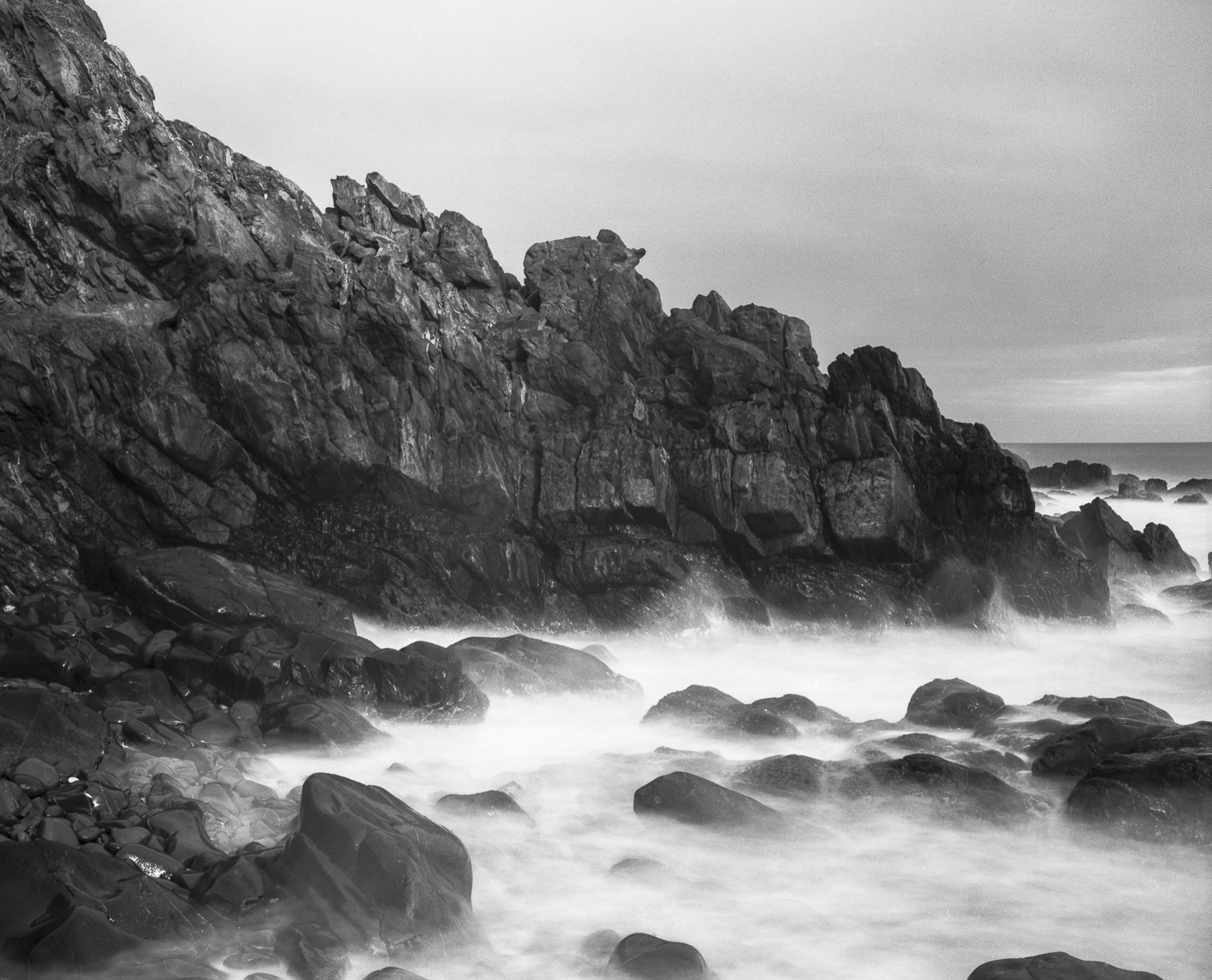As I go through my black and white archives from the 1980s for The Bowden Archives and Other Marginala book I am starting to come across some seascape images that I cannot recall making. Nor can I recall their location, the camera that I used, or even when they were made. Since my personal memory is unreliable my memory of these past events is going to have to be constructed.
The negatives had been stored away in an old, red filing cabinet with no information other than a tab that just says ‘Landscape Studies’. An example:

Many of the pictures in the Landscape Studies file were done whilst I was on the road. My best guess is that these kind of seascape images are different, in that they were probably made along the southern coast of the Fleurieu Peninsula, even though I don’t immediately recognise these rocks. But I have no memory of making them. I haven’t looked at the negatives or the contact since these were processed and printed. I cannot even recall who processed the negatives or printed the contact sheets. Was it me or a commercial laboratory?
In 2016 I am reading these photographs differently, and the reason that I was drawn to this location becomes irrelevant. It now becomes an interpretation of an image, influenced by a contextual memory of the situation. The boundaries become blurry as we step into the realm of fiction.
Update
However, looking at some of the other negatives from this particular shoot gives me a clue to the location. They are around the south western tip of Rosetta Head which frames Petrel Cove.I do recall that on my first visit to Victor Harbor as a day tourist I wasn’t impressed with the coastal area. Since there are a number of images from this particular photoshoot I was drawn to this location.
They would have been made after 1993, which is when I was doing a PhD at Flinders University, I’d started visiting Victor Harbor regularly with Suzanne, and we stayed at Suzanne’s mothers house in Encounter Bay.

Sadly, I cannot recall what I was thinking when I made these seascape photos, or even the actual year after 1993 in which they were made. I can, however, recall the camera that I used was an old Linhof Technika 70 and that these seascapes were taken before I switched to using colour negative film.
Maybe the proposed book, The Bowden Archive and Other Marginalia, ought to have a section that is concerned with the landscape pictures? The landscape studies would have been made in the early to mid-1990s. The pictures would have been taken after I’d moved to living in Ovingham, the Bowden project had come to an end, and I was in process of giving up my studio in Bowden. The studio had been given up by 1993. So the section of landscape pictures would come after the Bowden section in the book.
The landscape section could be a narrative of my past–me trying to find a new photographic project after the Bowden one had finished. Since my memory of these events is unreliable these photographs would shape my memories of these photo trips. Such a narrative would constitute a partly fictional narrative based on reality.
Memory is selective, and it is widely acknowledged that we most often choose to remember the good times and mourn their passing. In photographing our lives, we similarly become our own editors, selecting certain images and situations that will help us remember the past, as it should have been. Photographs mould our memories from a sometimes painful truth into an acceptable reality.
Selective memory loss numbs the pain of emotional trauma–in my case two broken relationships. The numbing is long term repression. Throughout our lives, our minds take snapshots of events and store them in an archive. Years later our memories become foggy or fade completely like old photographs, yet we can still fish them out of a hiding place when we want to remember something. In this way, both memory and photography are subjective modes of representing the past.
Leave a Reply